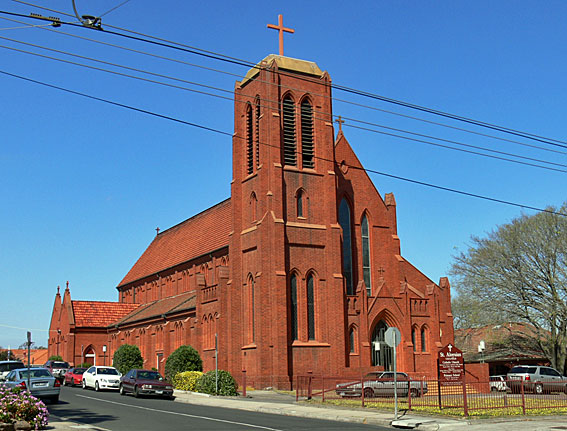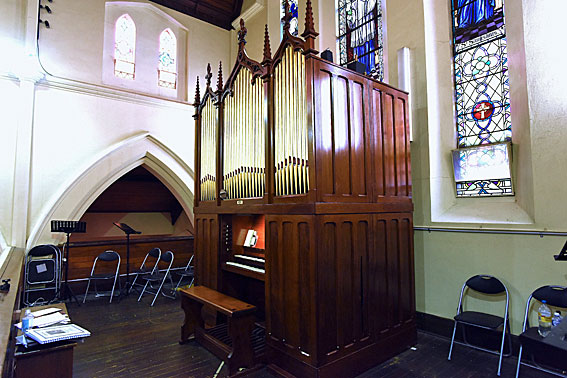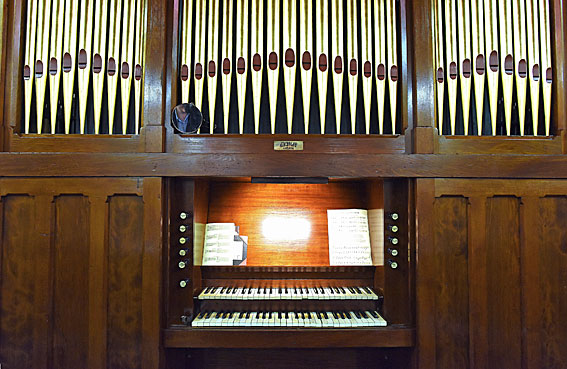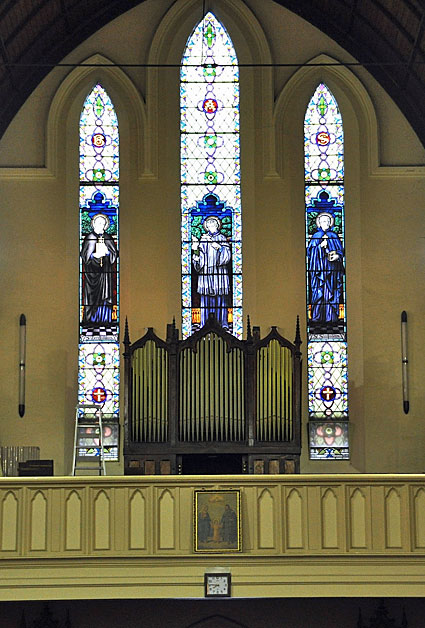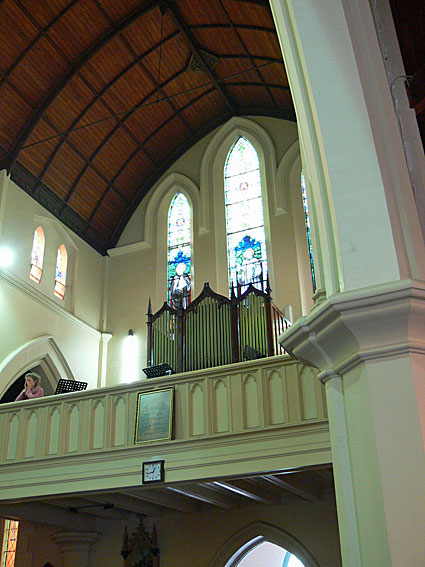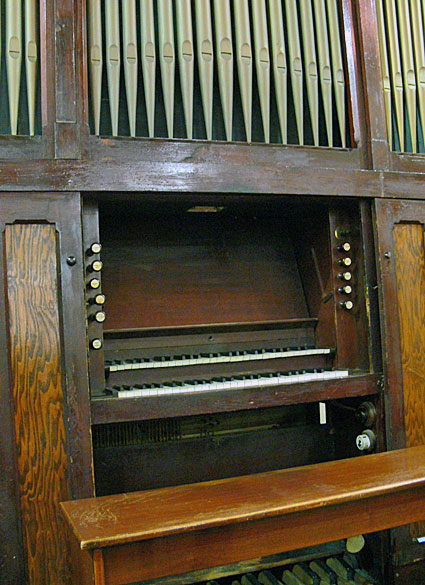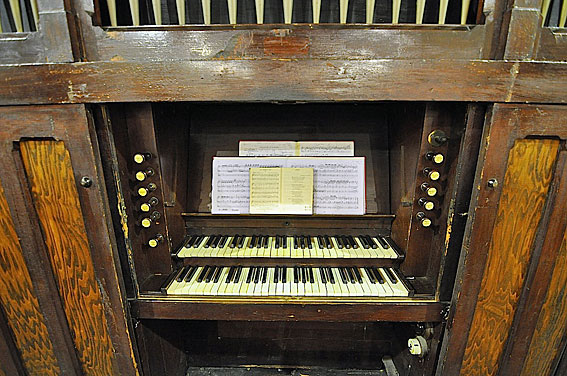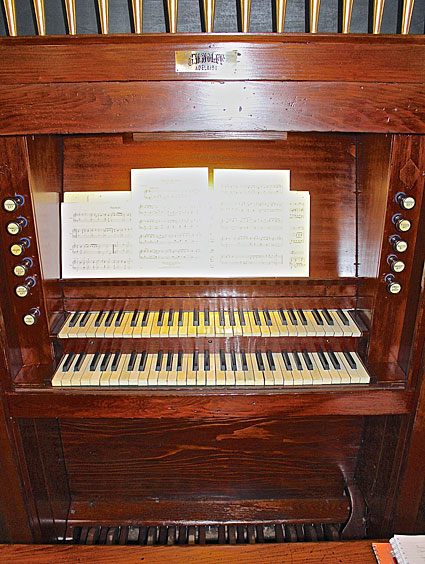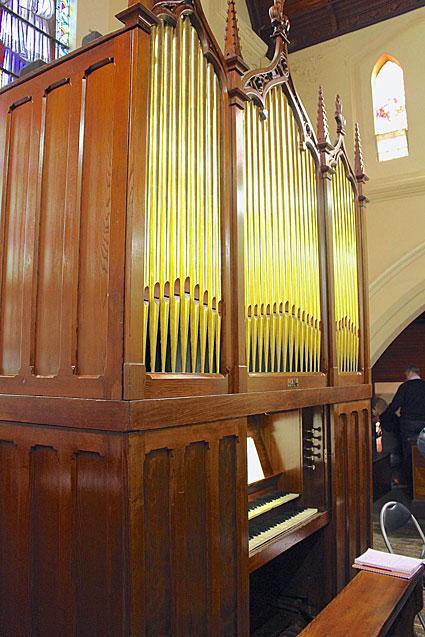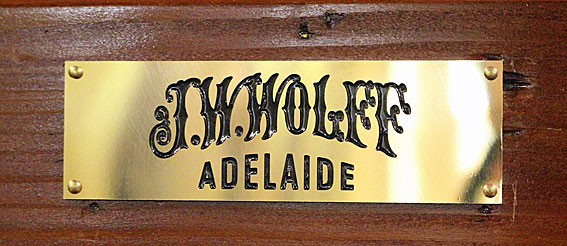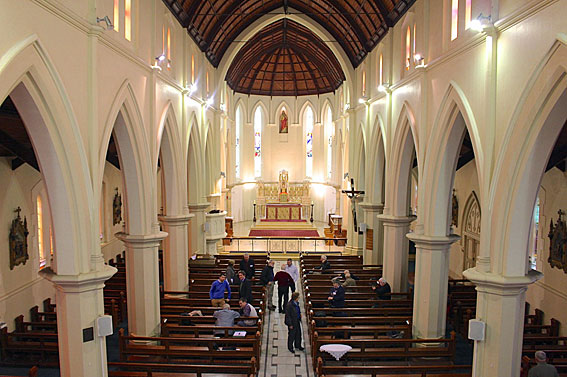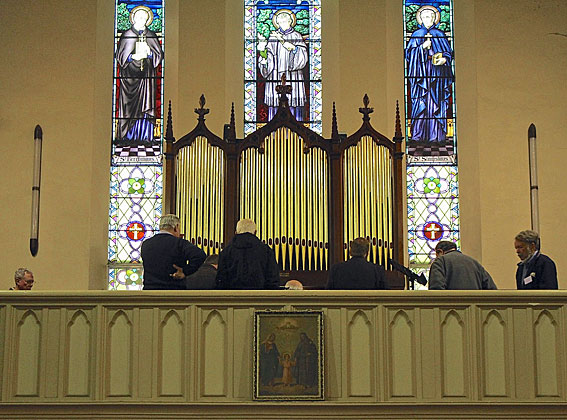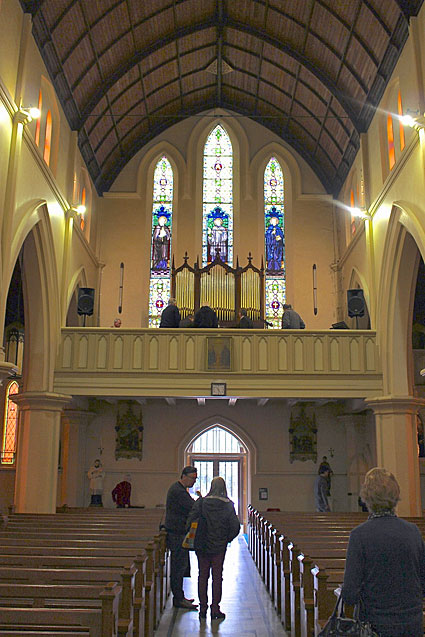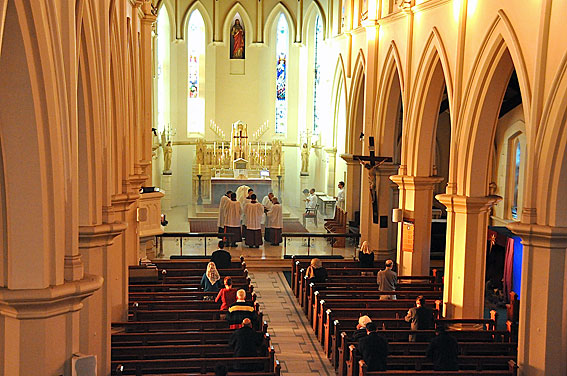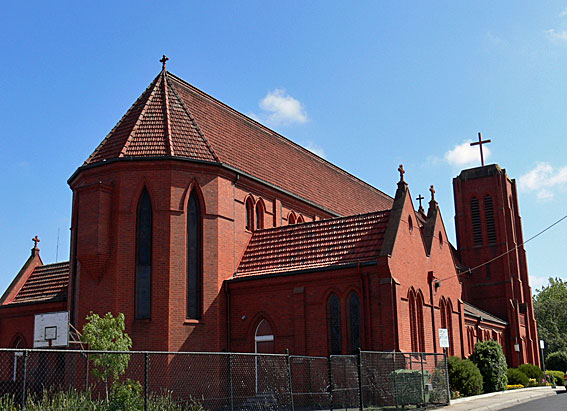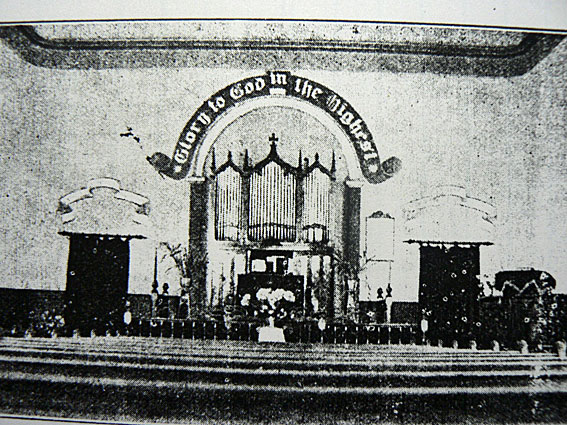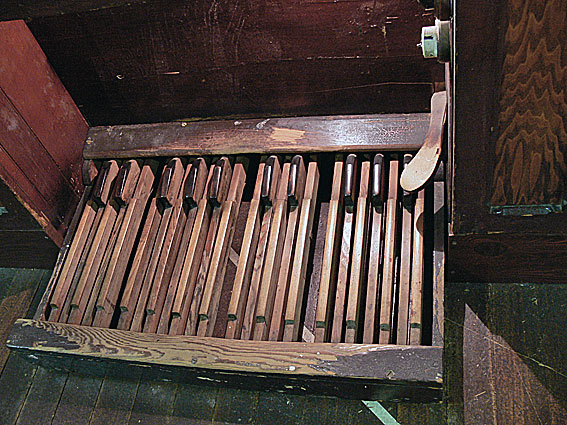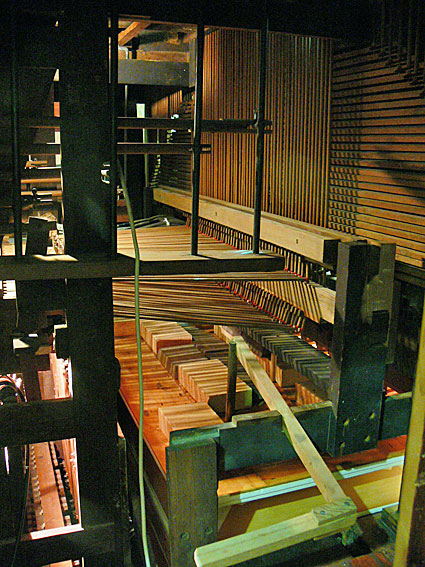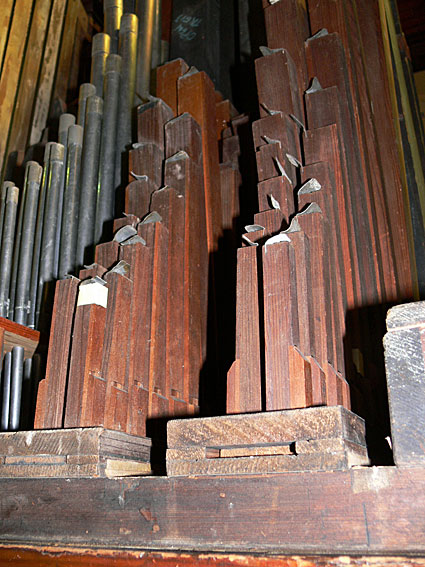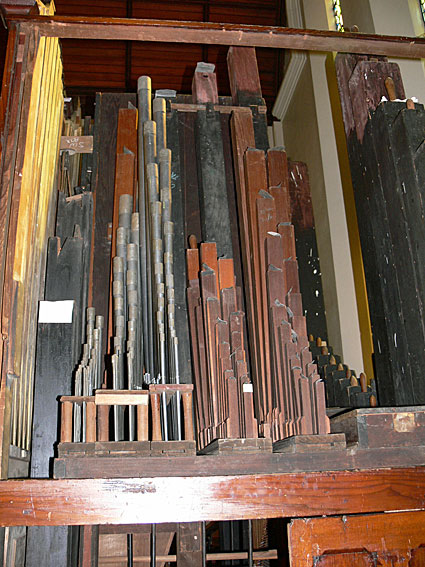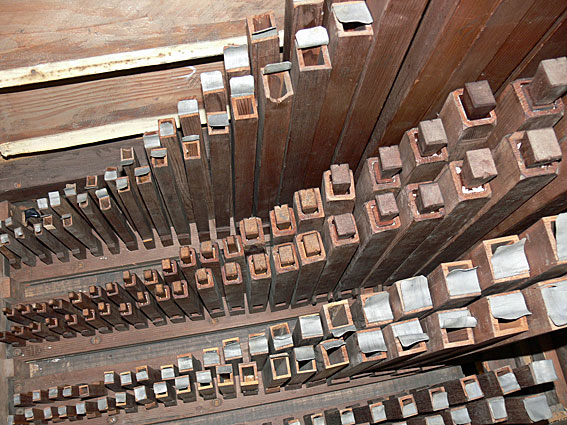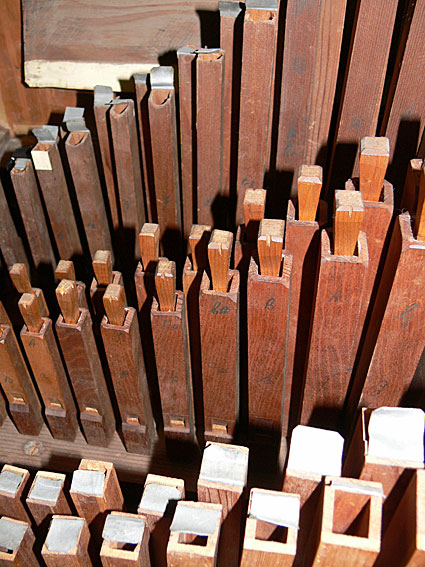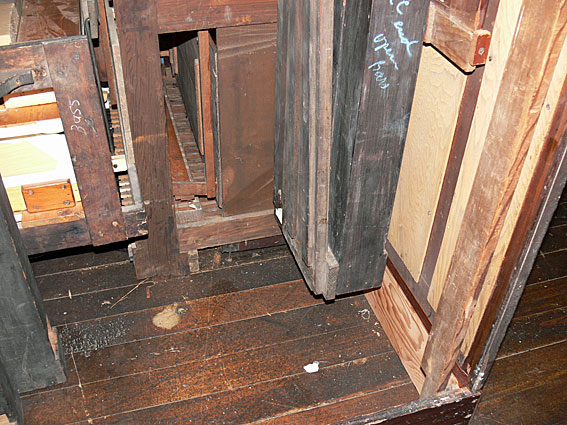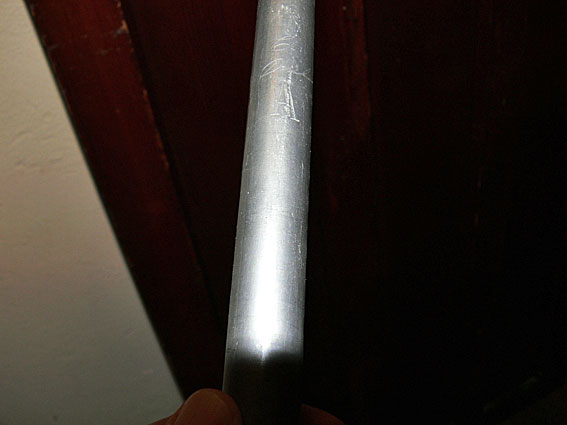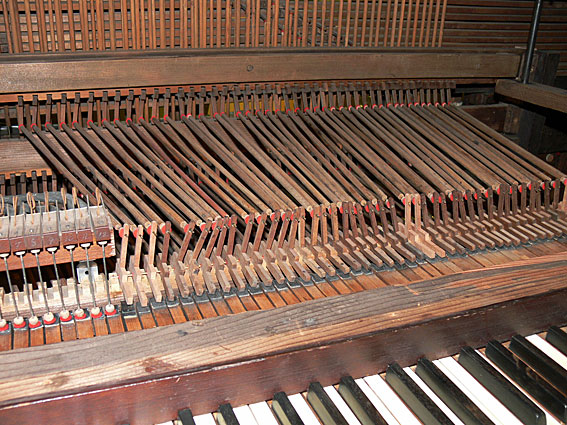St Aloysius' Catholic Church
Balaclava Road, Caulfield
Built 1880 Johann Wolff for Wesleyan Church, Port Adelaide.
Installed 2010 from Seventh Day Adventist Church, College Park, Adelaide, Wakeley Pipe Organs Pty Ltd
Restored 2017 Hargraves Pipe Organs Pty Ltd
2 manuals, 10 speaking stops, 2 couplers, mechanical and tubular-pneumatic action
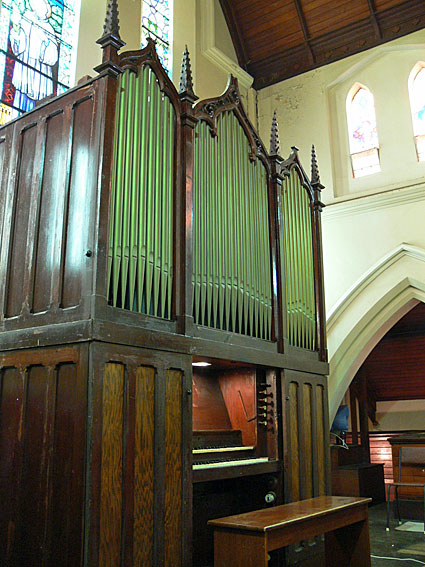
© OHTA, 2011 (last updated October 2017)
ST ALOYSIUS' CATHOLIC CHURCH, CAULFIELD
St Aloysius' Church was built in 1923-24 at a cost of £13,200 to the designs of Bartholomew Moriarty, who is also known as the builder who constructed Newman College for the architect Walter Burley Griffin. The foundation stone was laid on 18 August 1923 and the building completed in May 1924. It is constructed in red brick, with terra cotta tiles for the roofs. The style is a simplified version of Early-English Gothic, with the nave and apsidal sanctuary placed under a common roof ridge. The building consists of a nave of seven bays, with aisles and clerestory, sanctuary, side chapels and sacristies, one of which was initially built as a nuns choir. Sadly the impressive 140ft high spire which crowned the tower to the left of the main facade was demolished early in 1990 owing to delamination of the concrete.
The building was praised at the time of its construction for its "Gothic copyism" which ran counter to the prevailing Romanesque style adopted by the Catholic Church for its buildings in Melbourne. The style was chosen by the Parish Priest, Fr John Aloysius O'Brien, who had been trained at Maynooth Seminary in Ireland, which has a very prominent Gothic chapel. It is 150ft long and 52ft 6 in wide across the aisles.
The first organ in St Aloysius' Church was built by Keith M. Lavers, who was a local resident in Caulfield. It was a two-manual electric-action extension organ of 10 ranks and was performed upon by noted organist Horace Weber in December 1927. It was removed before 1935 and moved to St Luke's Anglican Church, Mosman, NSW and was later broken up. One must speculate whether its installation at St Aloysius' Church was a speculative venture on Lavers' part and that the church either didn't wish to keep the instrument, or couldn't afford its retention.
The present pipe organ was installed late in 2010 by Wakeley Pipe Organs Pty Ltd. The reservoir (apparently converted to single-rise) and feeders were earlier releathered by George Stephens in South Australia together with restoration of the tubular-pneumatic pedal action. The casework has been badly handled in the past with varnish and gold paint applied over original finishes. The original brass nameplate has been removed. However, it sounds very fine indeed in a splendid acoustic. It has been installed centrally in the rear gallery.
The instrument was built by Johann Wilhelm Wolff, the noted South Australian organbuilder. It was opened at the Wesleyan Church, Port Adelaide on 13 May 1880. There is an account of this in the South Australian Register for 14 May 1880:
WESLEYAN CHURCH, PORT ADELAIDE – An opening concert was given in this church on Thursday night, May 13, in aid of a New Organ Fund. There was an ambitious programme and an appreciative audience. The organ, which occupies the recess at the back of the church, is a handsome addition to the furniture. It is a two-manual organ, having fifty-six notes, ranging through the double D's to G. The great organ has five stops, the swell four, there are two cupolas [sic], and the bourdone [sic] has two octaves of twenty-four notes. Mr. J. W. Wolff, of Adelaide, was the builder and the invoice price was £250; other expenses bring the price to £300.
The Port Adelaide News 15 May 1880 also reported the opening:
Opening of the new organ at the Port Wesleyan Church.
A fortnight ago we published a paragraph notifying that a new organ had been purchased by the trustees of the Port Wesleyan Church, through the efforts principally of Mr J Bennett, who assisted by two ladies of the congregation raised, we understand, nearly £100. The cost of the organ which was built by and purchased from Mr Woolfe, of Adelaide, is £250, and its erection and incidental costs will absorb £50 more – thus leaving a debt of £200. The case of the instrument is constructed in the Gothic style, and, with its ornamental pipe work, it presents a very handsome appearance, and relieves somewhat the sombreness of the by no means attractive church. The organ, which has powerful though mellow tone, is briefly described by Mr Woolfe as a two manual one, with a range of two C's to G – 56 notes; great organ five stops; and swell organ, 4: two cupolas, boudore, two octaves. On Thursday evening last the formal opening of the organ was celebrated by a Sacred Concert which was fairly attended …
